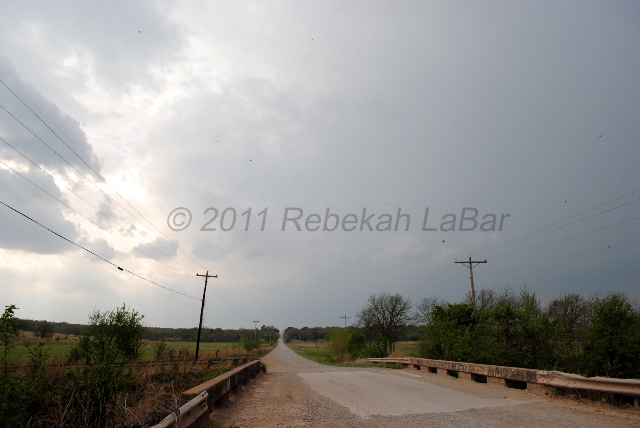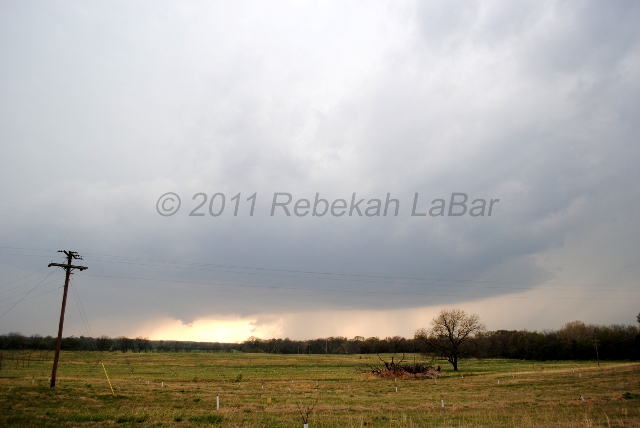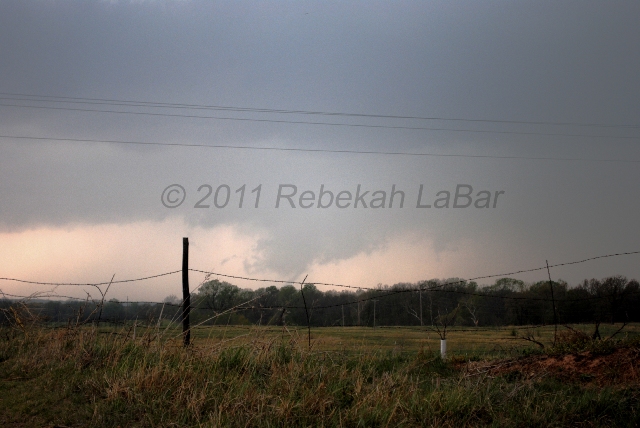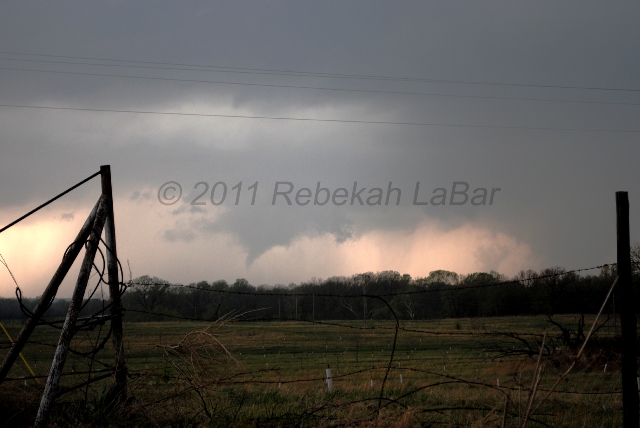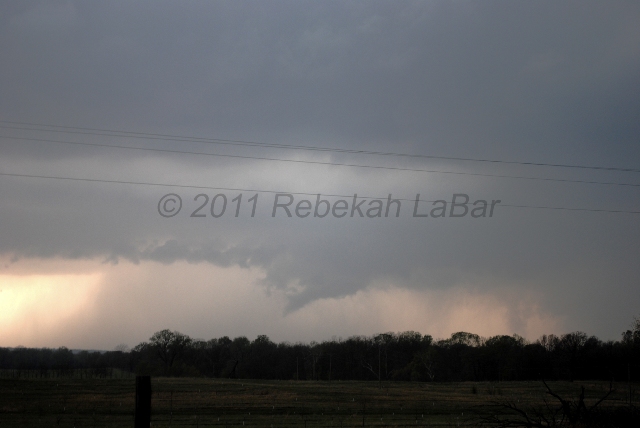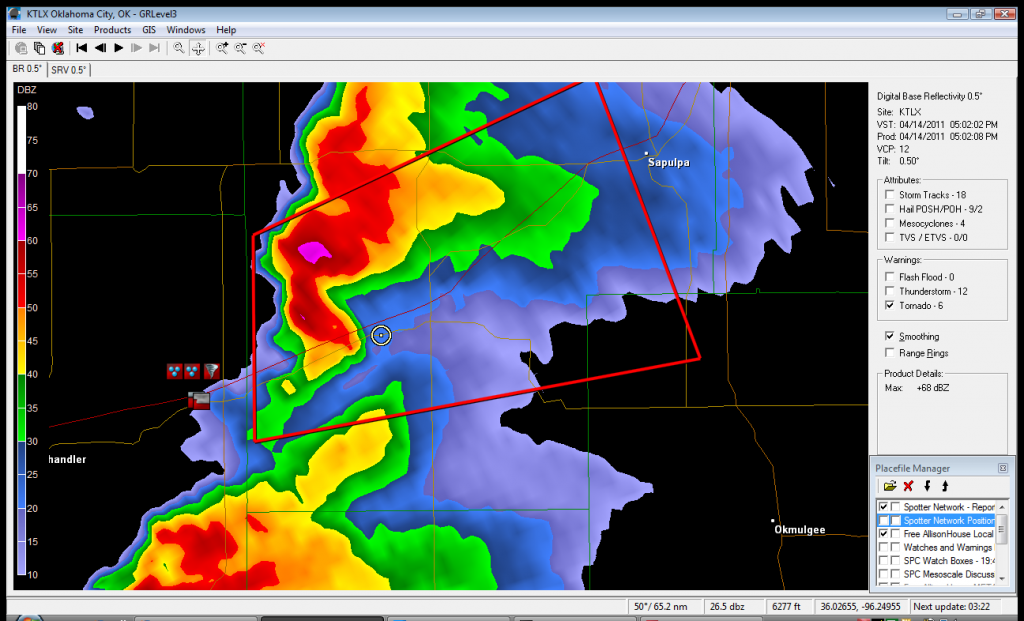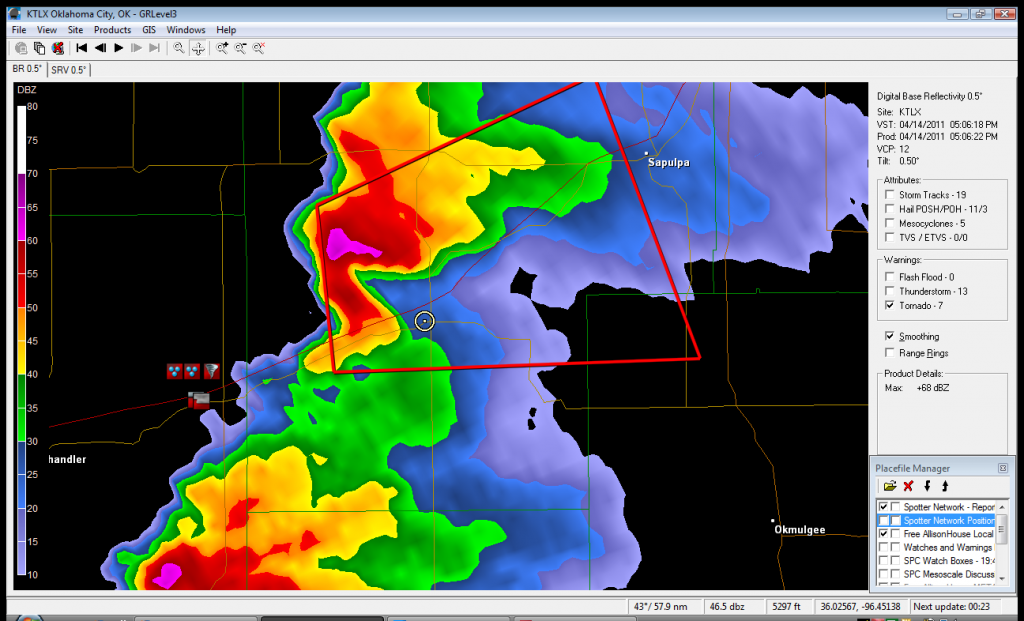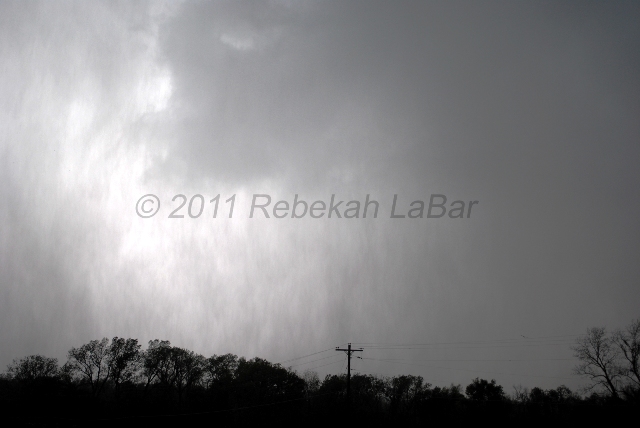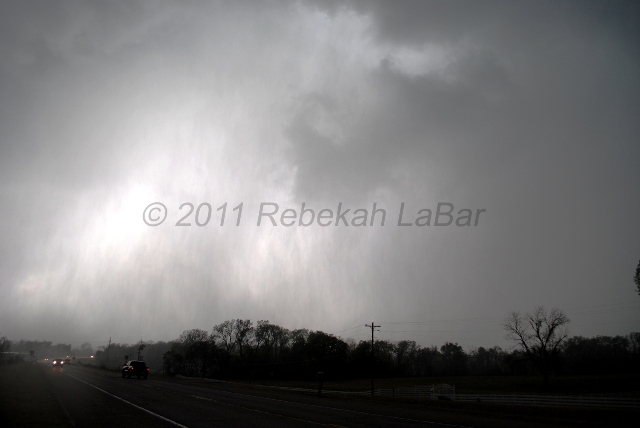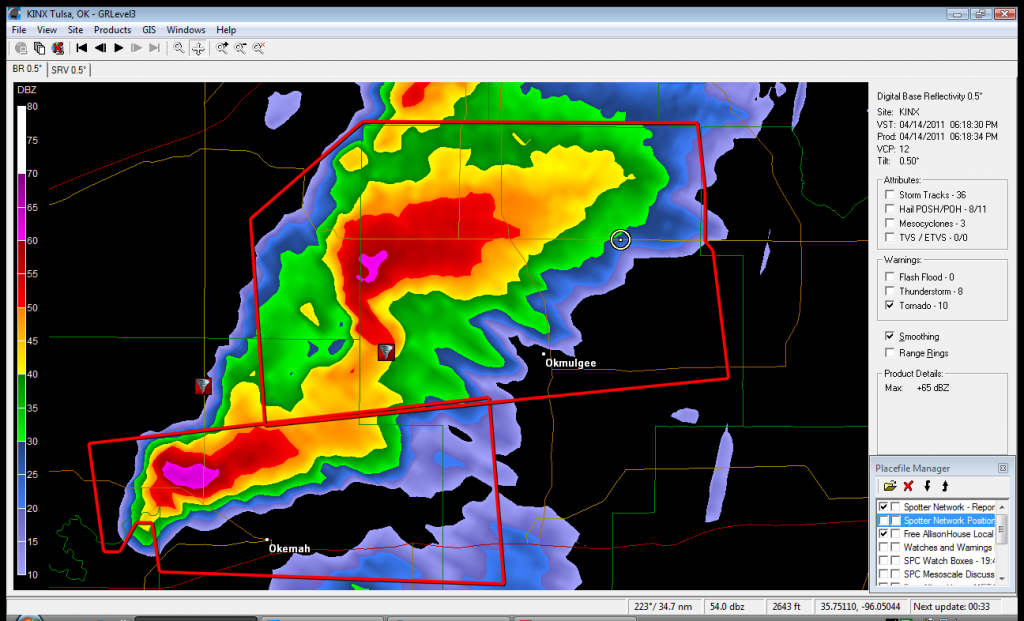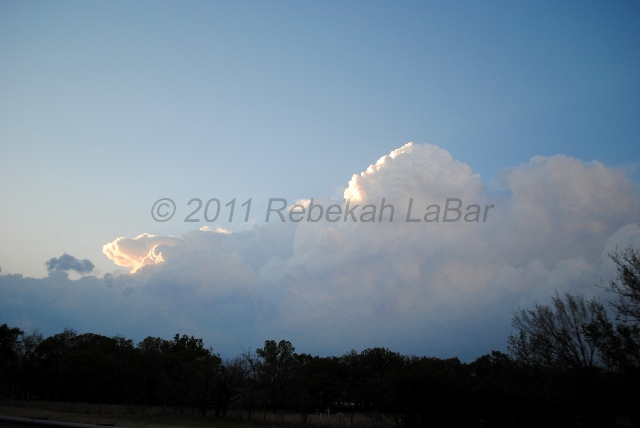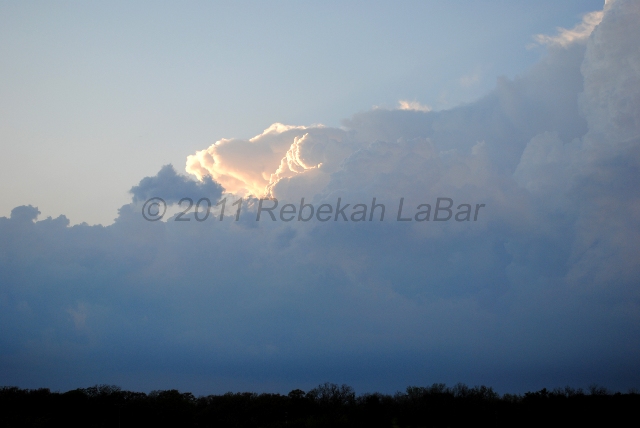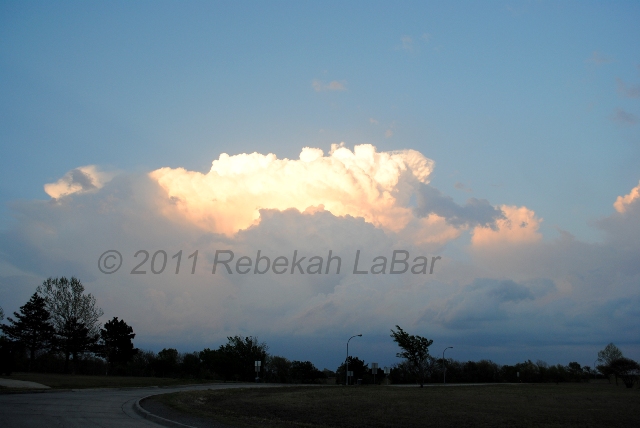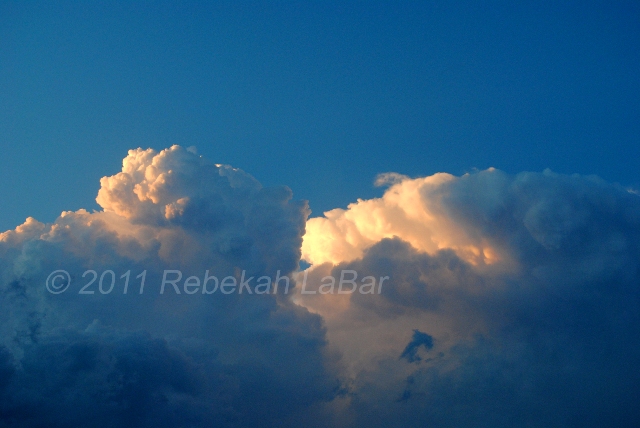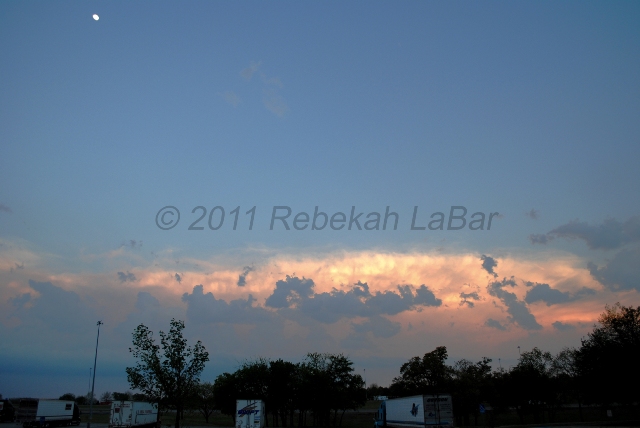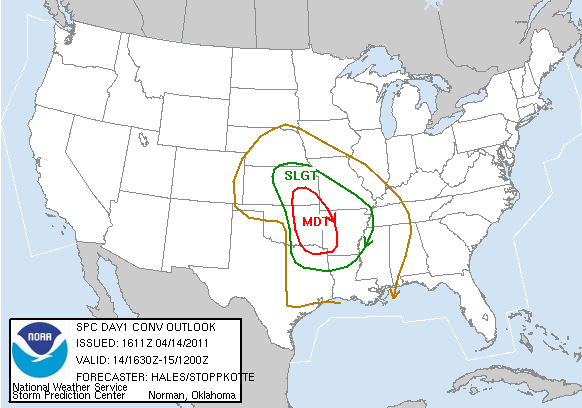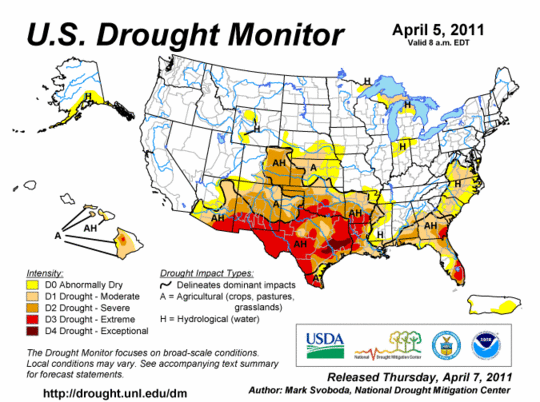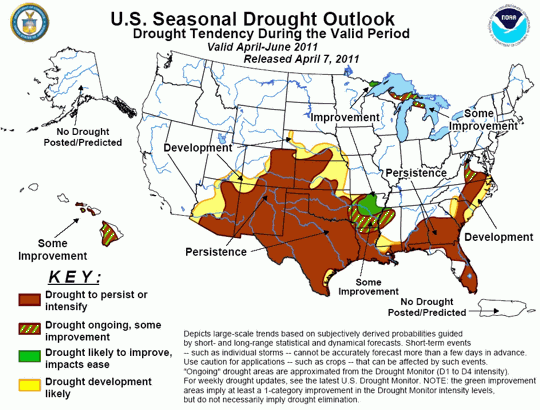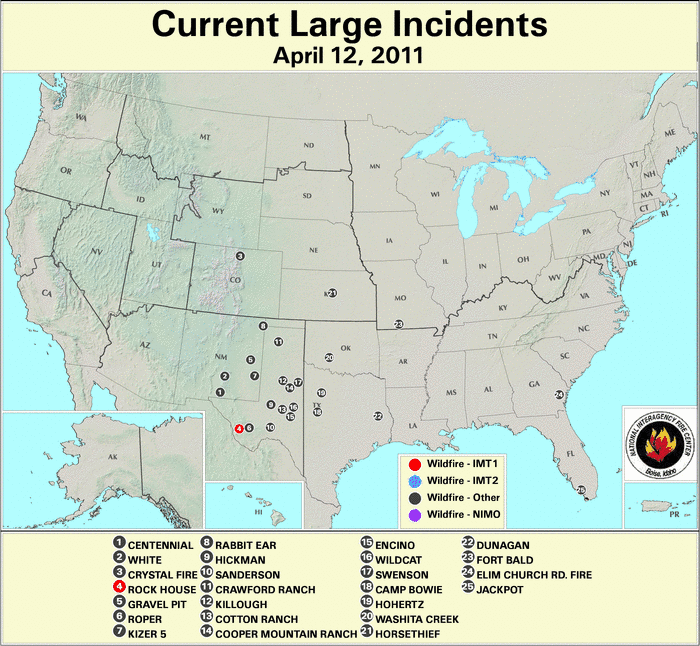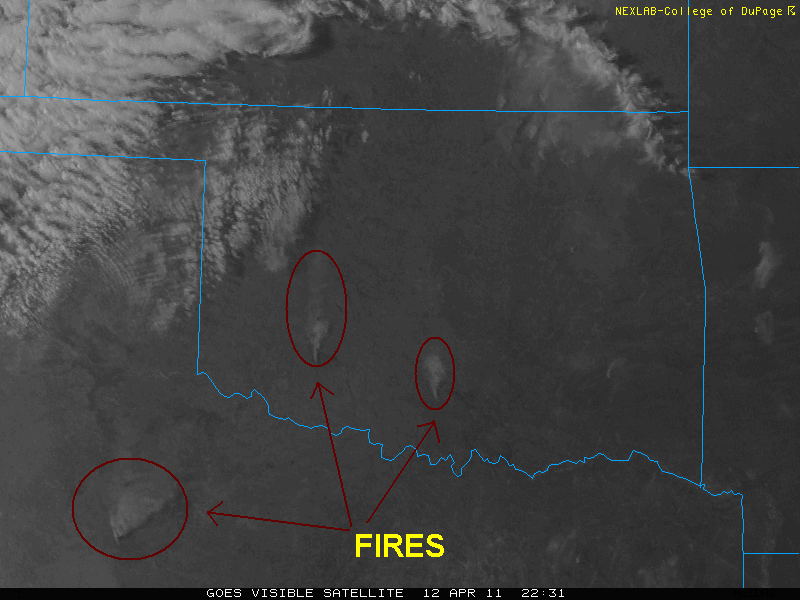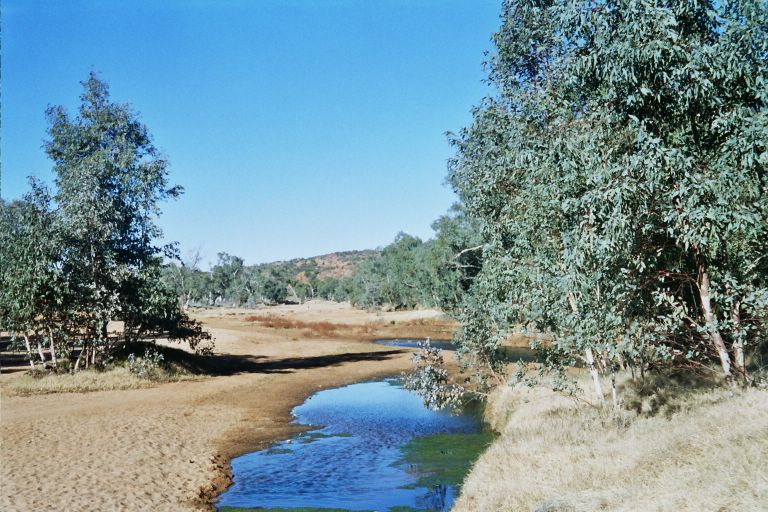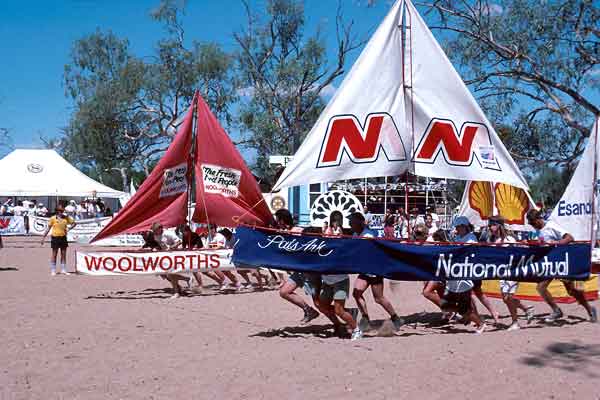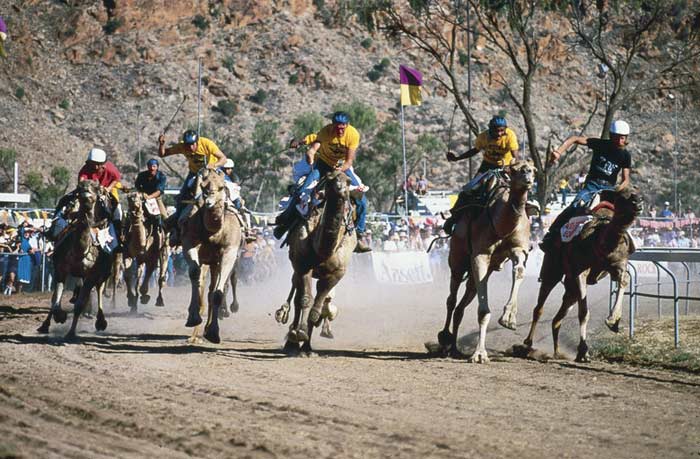04.15.11
Chase #4 Review: Bagged My First 2011 ‘Nado!
Oh, where to begin.
Yesterday’s chase turned out a lot crazier than I had anticipated. Be prepared, this account is on the long side. 🙂
I’ll be reposting these chase logs on my website soon, once I get a big enough block of time. I’ll also post some more photos then and brief summaries of the chase setups, but this blog post (and photos) pretty much goes over all the best stuff anyway!
——————————
Jeff Makowski, Esther White, Amy Edmonds, and I left Norman just before 1:30 pm. The dryline stalled just east of I-35, and with some upper-level forcing, moderate instability, and a lack of a cap, we figured storms would form pretty much all along the dryline. In fact, I worried that the storms might line out too fast. Shear was great in the warm sector, and we figured that pretty much any storm that did form could become a supercell with the potential to produce a tornado.
With that in mind, we figured we would have just as good a chance to see supercells north of I-40 as south of I-40. Much of the area south of I-40 and east of I-35 is about the worst chase country, between trees, hills, lakes, rivers, and a bad road network. I decided to pick the area just north of I-40, but early on to split the difference and drive out east towards Shawnee.
Now, on the last couple of chases, I noticed one of the cigarette lighters in my car isn’t working. I just got the fuses replaced in both of them last year, but thought perhaps another fuse had blown. Also, the other cigarette lighter seemed to be on the blink, as my computer wasn’t charging. As we seemed to have a bit of time to spare, despite cumulus beginning to grow around us, we made a quick stop at Wal-mart in Shawnee.
After getting fuses and replacing them in my car, I found the one cigarette lighter was still not working. Oh well, guess I’ll have to get that checked out at some point. Anyway, back on the road, we made another brief stop at Braum’s in Seminole.
As we ate our ice cream, we saw a very nice tower go up just to our west, and it popped up on radar along with a number of other cells to the north. We immediately set off after the storm, as we knew that if we didn’t get on the storms early, they might line out too fast.
We had some concern as we followed the storm, as there was another little cell to the south that began to interfere, but eventually our storm absorbed the little storm. We stopped on a gravel road somewhere just northeast of Prague (Oklahoma, that is, not the Czech Republic!), to watch the storm get its act together. We heard a nearly constant rumble of thunder as we watched some lightning to our north. There was also a huge flock of swallows (ssooo many birds) flying around us, near a creek, which was fun.
I ran down the road as some trees were obscuring our view of the updraft base, and noticed a slowly-rotating, ragged wall cloud. We drove north a bit, to about a couple miles southeast of Stroud.
Once again, a cell to the south began to interfere with our supercell, and I began to lose hope. After another wall cloud formed and dissipated, we were about to just head south again and aim for the next cell down the line. However, just as we started to get back in the car, we saw another wall cloud form and then a funnel cloud started to come down.
Then, 10 minutes later…
We saw this funnel cloud go down over halfway, but the base was obscured due to some trees on the horizon, so we were not sure at first if it was a tornado. After a minute the funnel lifted above the treeline, stretched out horizontally, and then disintegrated. I didn’t even have time to get any video, and my few photos didn’t turn out very well.
The supercell at this point was tornado-warned, and things were getting chaotic. Shortly after this, we heard some people closer to Stroud reported our funnel as a tornado, and we later saw photographic and video evidence that it did indeed touch down (supposedly it damaged a restaurant sign as well). The tornado was probably about 4 to 5 miles to our northwest, and we saw it at 4:42 pm. Here is a link to a closer photo of the Stroud tornado, taken by storm chaser Putnam Reiter.
The storm looked like it was still growing and continuing to cycle, so we pressed on northeastward, driving mostly on Route 66. About 20 minutes after the tornado, when we arrived in Bristow (about 20-30 miles southwest of Tulsa), we had a harrowing experience with rapidly rotating rain curtains.
The supercell’s hook began to wrap up almost around us, and we suddenly got blasted with a wall of rain and looked up to see the sky rotating. It was such a surreal experience, as I have seen rotating curtains of rain before, but never so fast and so close. I was almost too mesmerized to worry about our proximity to where a tornado could touch down.
The screen captures below show the radar image (from GRLevel3) and our location (white circle). The red boxes are tornado warnings, and the small hail, wall cloud, and tornado icons are reports from chasers and spotters via SpotterNetwork.
The hook of the storm was chasing us at this point, but as it slid just north of us, we briefly stopped for a few photos. Obviously photos cannot do justice to the beauty of the rotating rain curtains (especially since the contrast didn’t come out very good), but my short video didn’t turn out too well either (everything was happening so fast, getting good photos and video wasn’t the first thing on my mind!).
We gave up on the supercell as it neared Sapulpa, as we did not want to chase anything into the Tulsa metro. There was another decent-looking tornado-warned supercell just to our south, though, so we drove down on some more gravel roads and eventually saw another wall cloud on that supercell.
Here is a GRLevel3 screen capture of that storm and our location, at 6:22 pm:
Of course, then the tornado-warned supercell south of this one started to look better to us, especially as we wouldn’t have to fight with more rain-wrapped wall clouds and potential tornadoes.
However, almost no sooner did we drop south of Okmulgee than the southern storm weakened and the tornado warning was lifted. We figured that at this point our chase was about over, as there were multiple tornado-warned storms south of us, but they were well south of I-40 and in bad chase country. We later sadly learned that one of these supercells produced a large, deadly, and damaging tornado that affected Tushka, near Atoka, in southeast Oklahoma.
On our drive back to Norman on I-40, we saw the setting sun light up the anvil and mammatus of one of the supercells to our south and the towering convection of a couple other storms to our north and east.
I took a lot of photos, and I may have some better ones to post on the website later, but here are a few I grabbed for now. I’m a bit of a sucker for convection, so I went a little crazy taking pictures and had a hard enough time narrowing it down to these. 🙂
We had a great day, and were back in Norman around 9 pm!
Thanks for reading, and thanks for following my adventures!
The next chase opportunity for me may be as soon as early to middle of next week, perhaps in south central Oklahoma to north central Texas, but it’s still too far out to tell just if, when, and where.
Permalink Comments off
